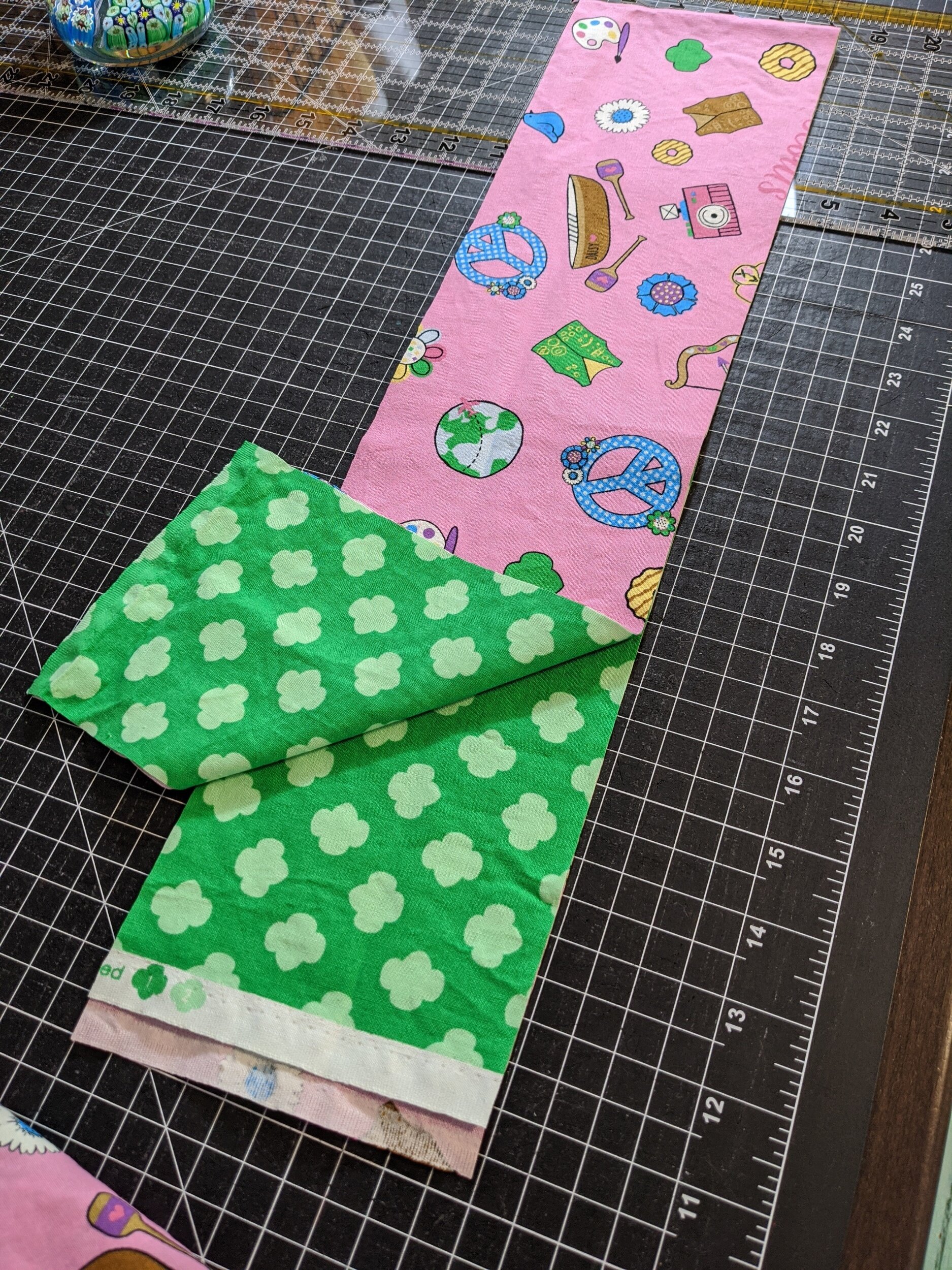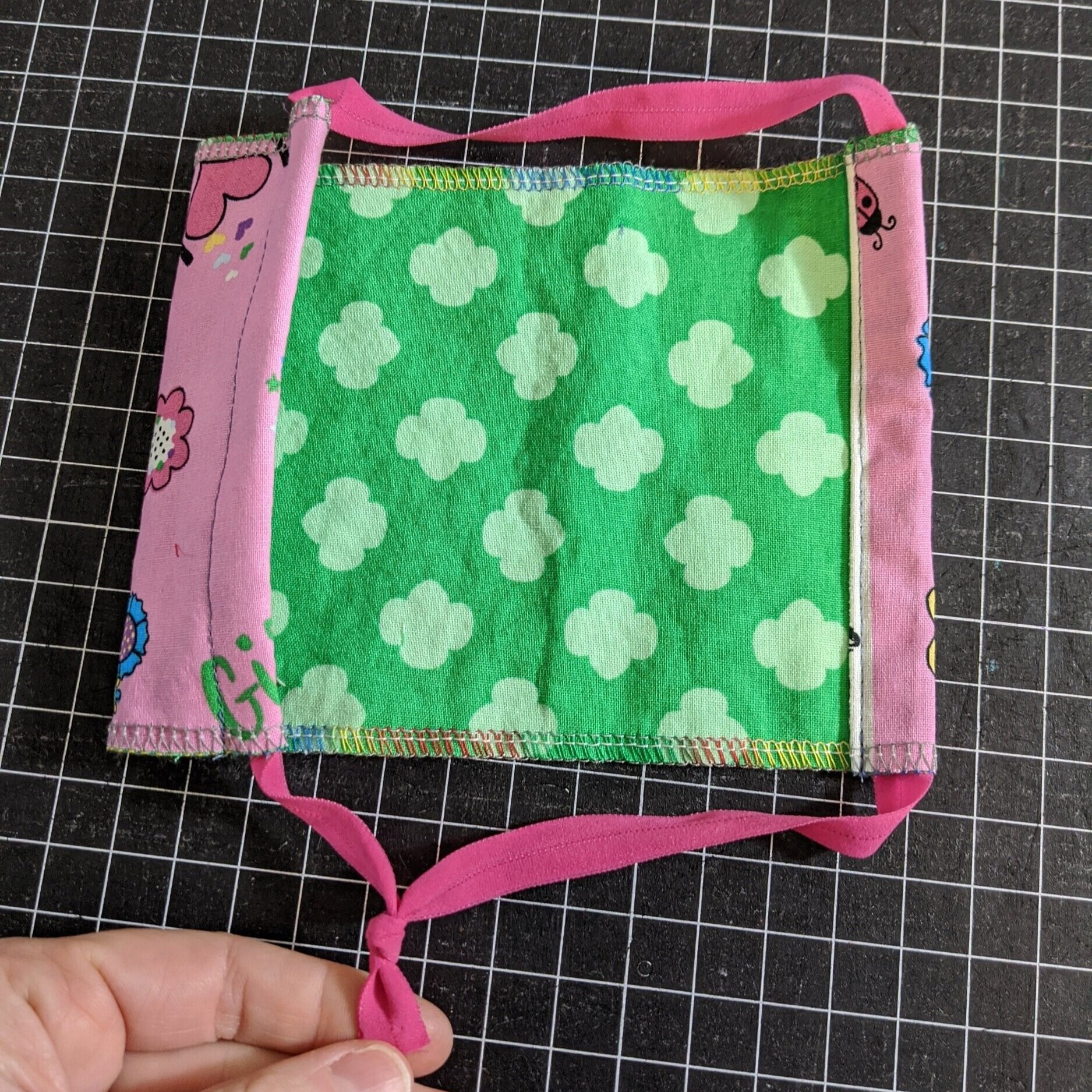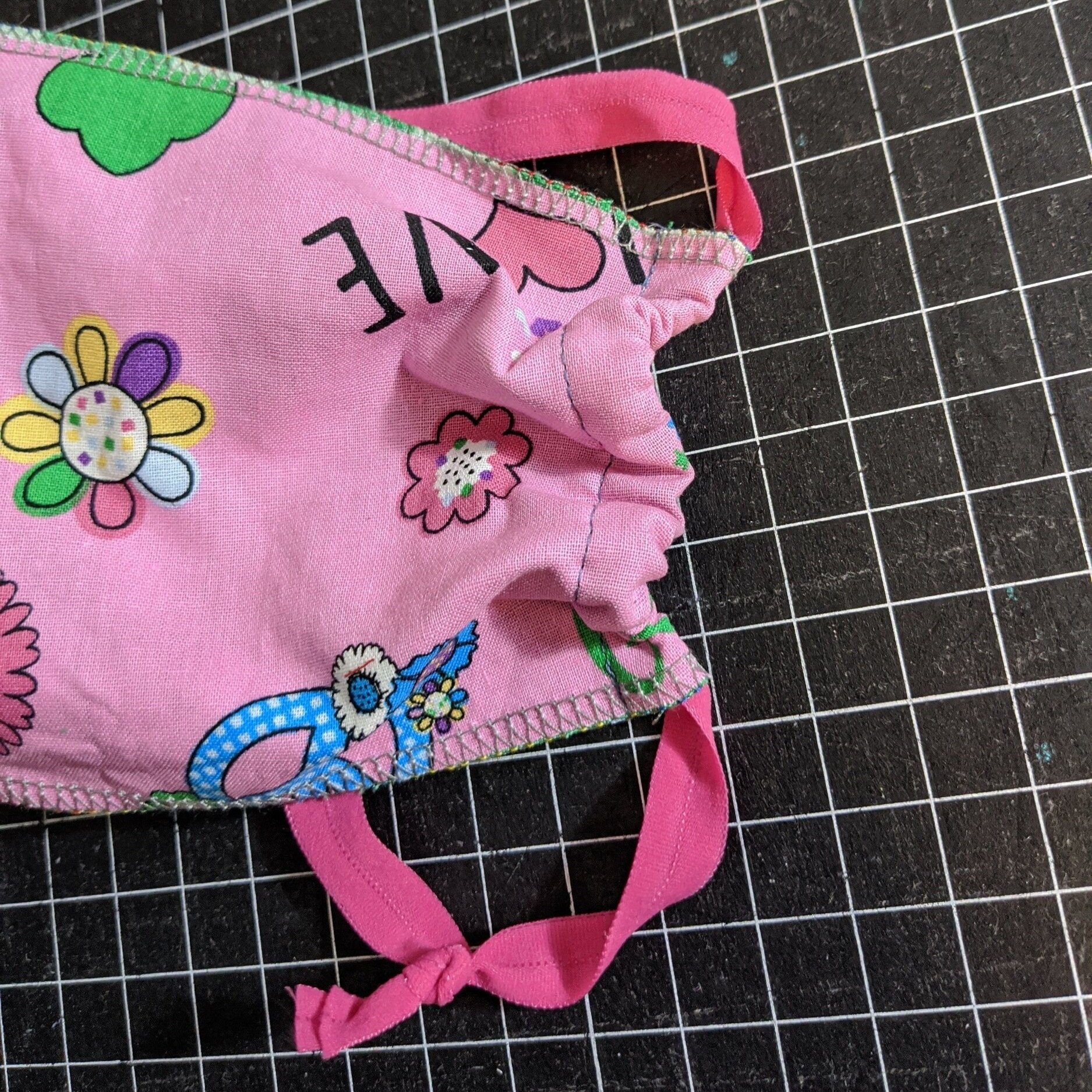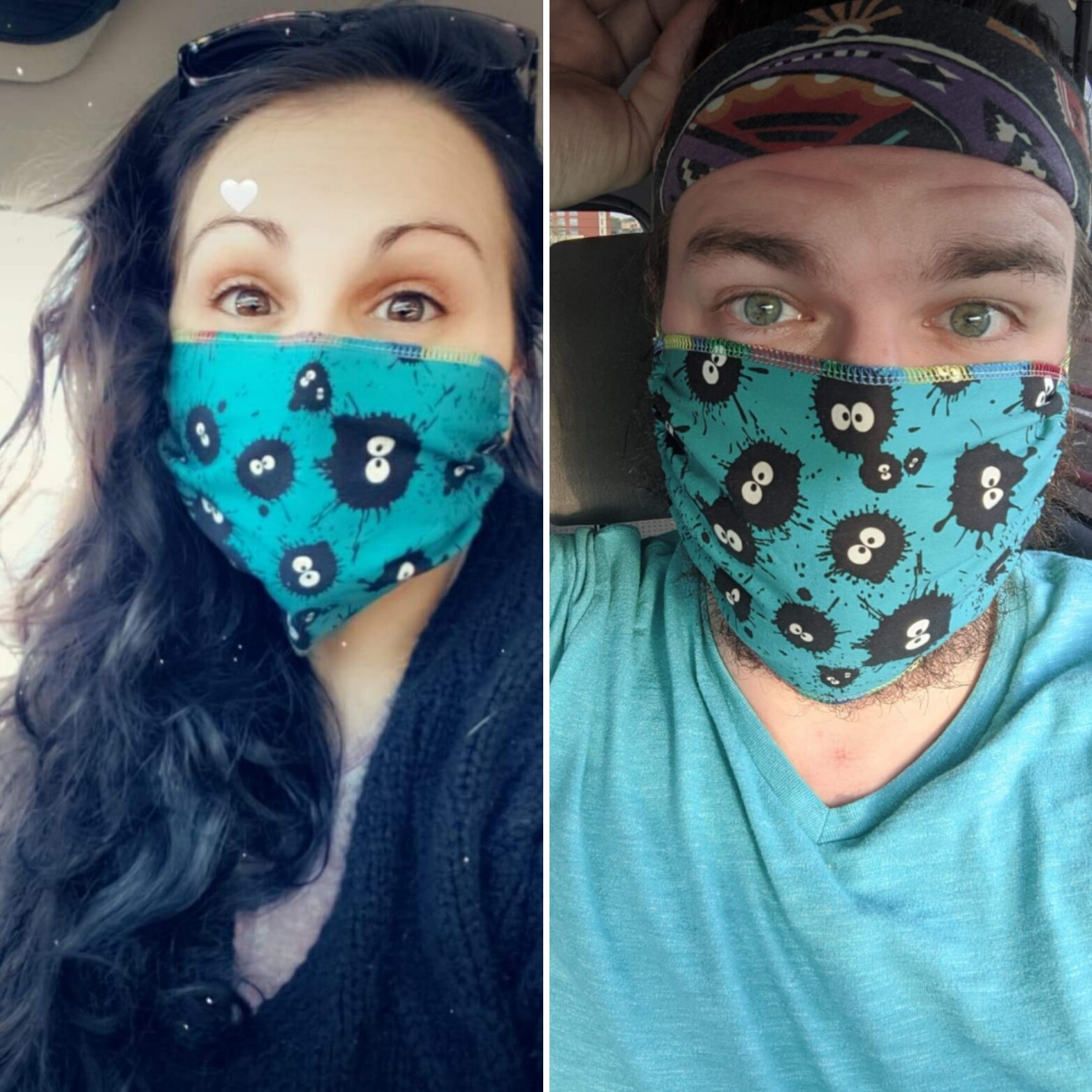The weeks just keep flashing by and it’s time for an update on making cloth masks as I’ve had a few people notice my preferences have changed and have inquired as to why.
Initially, I followed the directions from a local hospital’s preferred design. That method was blogged for Clutch MOV here.
I also wrote about a mask adapted for construction on a serger.
Then, I tried the mask designed by Sugardale. Here’s the direct link to the pattern download, and the tutorial saved in stories. What I really like about this pattern is the shaping for the nose and chin (essentially darts), the casings at the sides, and the general approach to the ties, which go behind the head.
Mashing the serger mask (quick finish on the sides) + Sugardale mask (casings for ties) led to my current method.
This morning, I made 16 masks this way in about 45 minutes, which included pauses to photograph the process.
Steps-
Layer 2 different fabrics wrong sides together and cut the height in width of fabric (WOF) strips. For children, I cut 5” strips. Adults, 6”.
Serge along the cut edges, keeping the fabrics paired wrong sides together.
After serging both long sides, cut to width. I do 9.5” for children and 10.5” for adults. That's 4 masks/WOF using typical quilting cotton.
At this point, I like to press 0.5” on each short end to one side. One can skip this step, but it's rather quick, you get a break from sitting, and I find it makes to easier to create the casings.
At the sewing machine, I turn the short ends under another 0.5” and edge stitch the casings closed, back stitching at the ends.
And keep going in a chain.
For securing to the head, I prefer fold over elastic, which I've been able to readily source, it's very stretchy, doesn't require fiddling with ties, and it's comfortable to wear. I cut the elastic to 24” for adults and children and use a loop turner to quickly thread it.
I pull the ends to the same side (bottom) and leave them untied.
completed mask
I instruct wearers to tie the elastic to fit, cinching the sides for shaping.
If the wearer prefers ear loops, they may cut elastic in half at the top and tie two smaller loops.
And that’s it. These are simple cloth face coverings that can be made quickly, at a rate of about 20/hour with very little fabric waste.
Two very happy mask wearers.


















